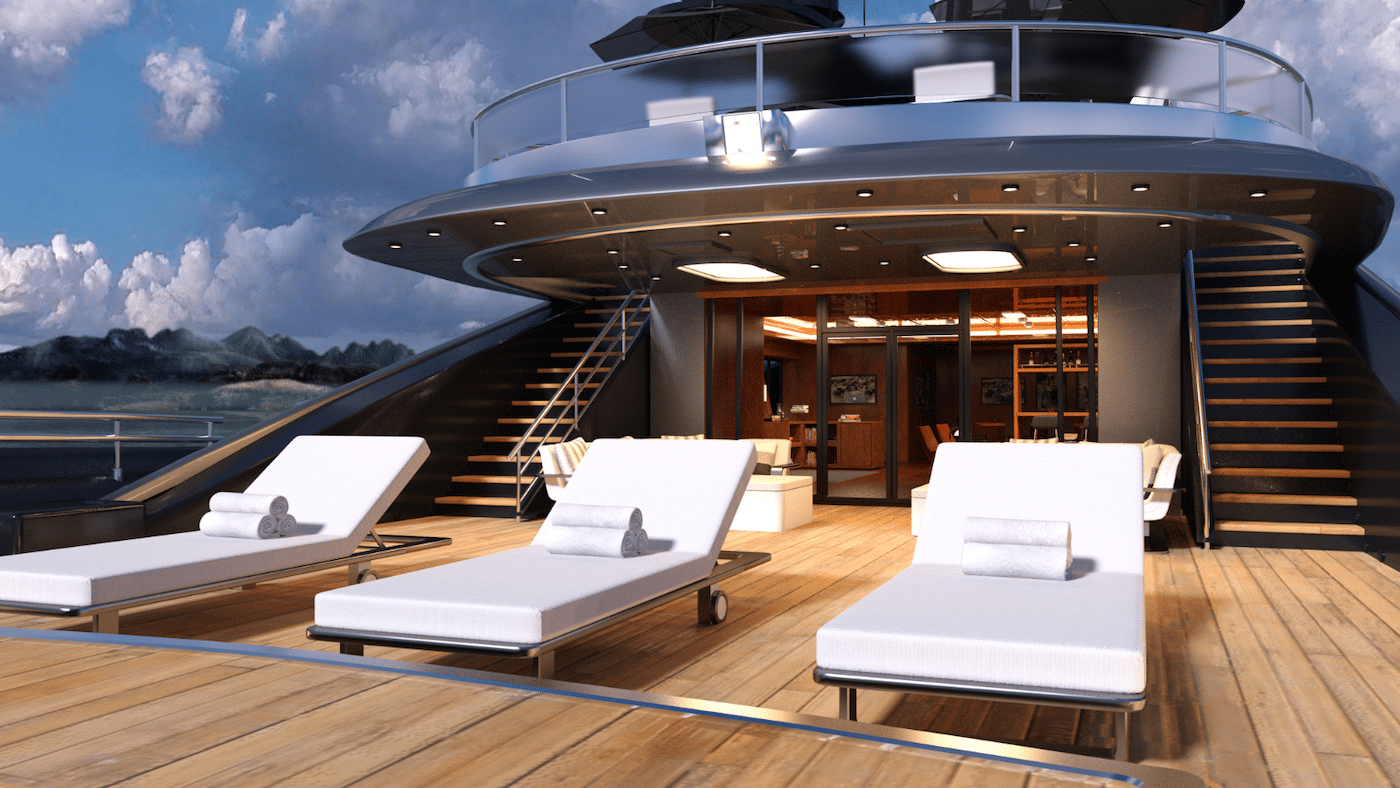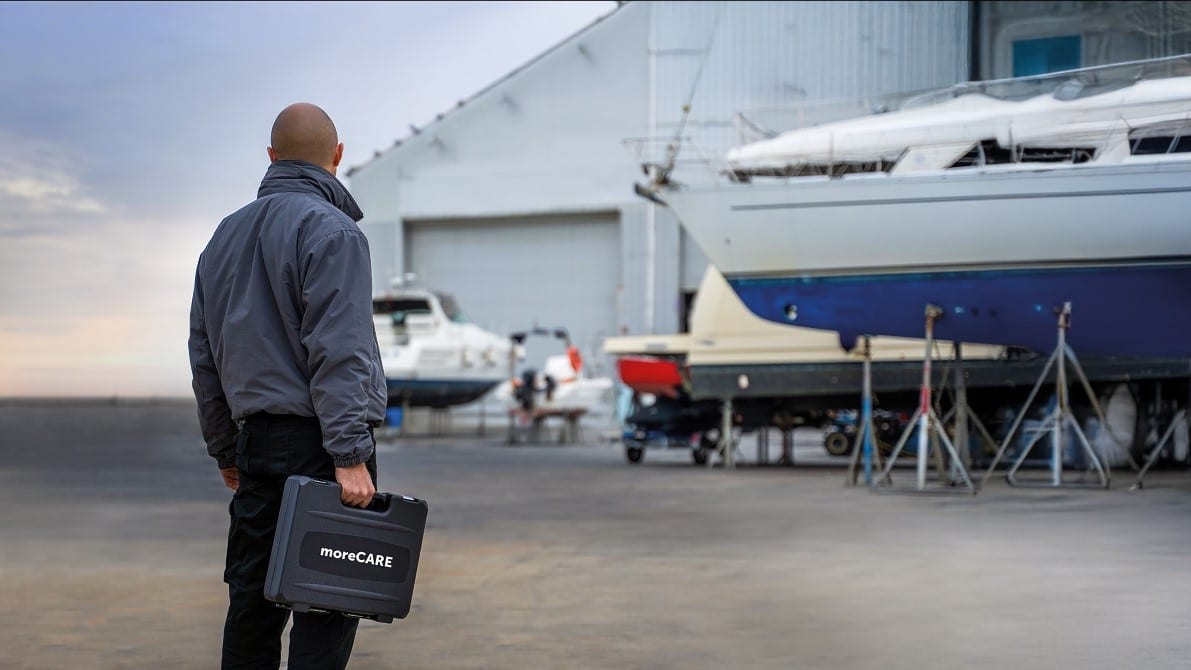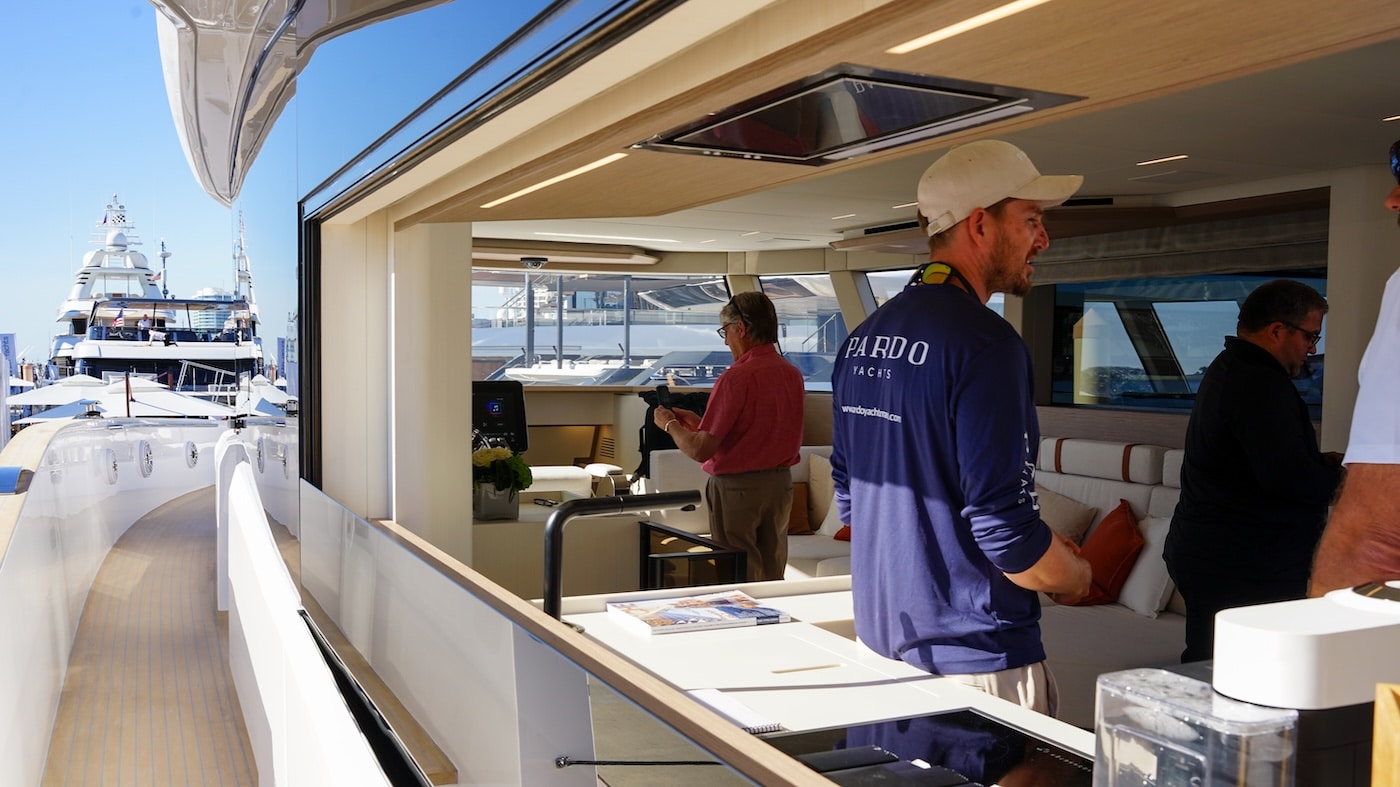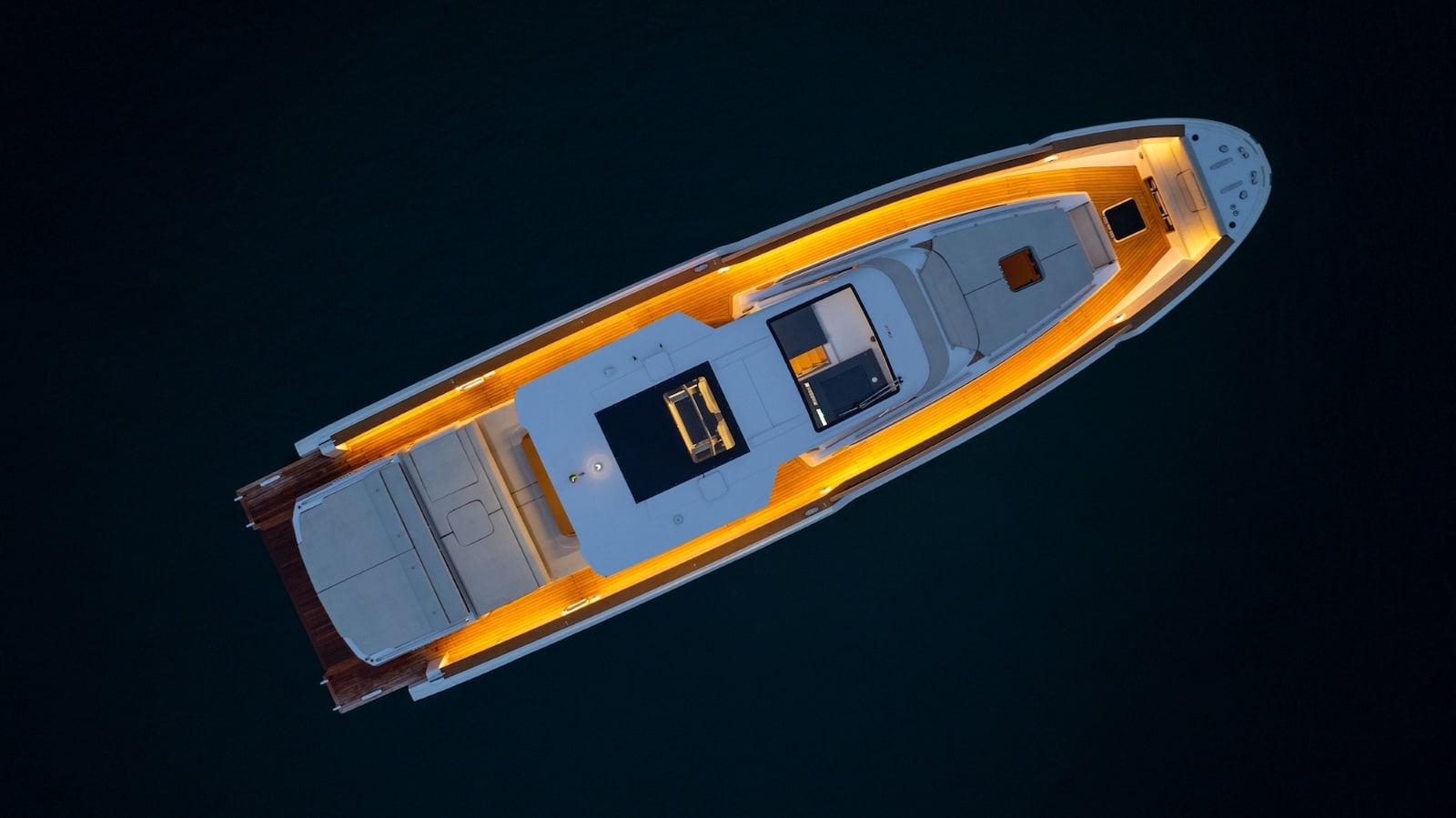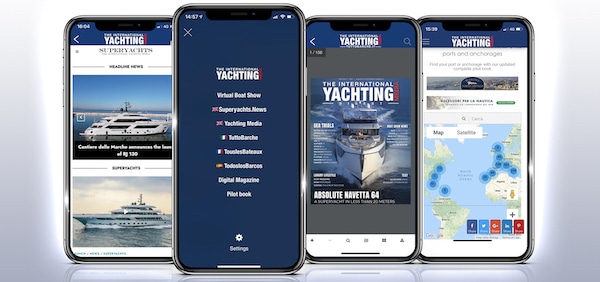Italian Style has different expressions in the US. Among them, there’s certainly Rio Yachts, a brand which has made the history of the Italian boat industry. The reasons are the same which have marked the success of nautical Made in Italy all around the world: quality, style, elegance and, in the case of Rio Yachts, a very high customization index.
The exclusive Rio Yachts dealer in USA, Aderbal Coelho Junior, who welcome us on the quay of the Miami Marina Beach for the sea trial of the Rio Yachts 42 Air, highlights how these qualities have driven him to collaborate with the Italian brand. But he even adds a further quality: the customization chances offered by Rio Yachts boats, especially within the USA market.

Playing with the joystick, Marc takes us out of the mooring post fighting the stream and highlighting the great handling of the boat fitted with two Volvo Ips 600 engines. In just few minutes, we’re out of the marina and ready to start our sea trial, where the hull of the Rio Yachts 42 will be spared from nothing since we want to test its real quality.
The boat
The profile of the Rio 42- designed by the Italian designer Marino Alfani – hull and interiors have always been designed by the Design Office of the shipyard – outlines a compact open yacht featuring a curved hard top which perfectly harmonizes with the deck plan while contributing to make the whole slender.
The astern swimming platform leads to the large cockpit which has a rather classical layout: two sofas (one on the left, the other on the transom) create a lounge on the starboard side, just before the double pilot station, equipped with a small but functional galley with sink, hot plate and refrigerator.
On the left, a large comfortable chaise longue seems to invite to relax even under way. The hard top covers and protects most of the outdoor space and can almost disappear thanks to a roof electric opening system which allows to enjoy a greater contact with the outside.

The stern-to-bow passage is easy and safe thanks to some robust handrails and a guardrail running along the entire gangway to the stern pulpit.
On the foretriangle, there’s the traditional sun pad, located just next to the windscreen and able to host up to 4 guests.
Undoubtedly remarkable is the pilot station design. The adjustable double seat allows to steer the Rio 42 both while standing and sitting. In both cases, access to instruments is user-friendly and ergonomic. We’ll appreciate both the facility and the spontaneity of movements from throttles to multifunction displays and from steering wheel to trims during our sea trial, when the need to perform multiple manoeuvres inevitably entails that for repeated movements.
Interiors

The key elements lie elsewhere.
First of all, volumes. Starting with cabins, where what astonishes is not just the amount of room available, but, above all, the ability designers have showed in giving this space a shape and a wonderful mobility.
When we easily move on the planking level around the large double bed, when we can place our hand on a plan right where we instinctively feel that we need it, when the ergonomics of the space, literally meant as the optimal relationship between space and human movement, is greatest, the perception we have is that to be on a bigger boat. And it’s a sensation which expresses a palpable value for it is the reflection of an objective fact: greater comfort.
But, it’s when we abandon the general dimension to enter that of details that the key elements of the brand raise: style and customization ability.

As regards customization – once again – the key elements are details: a fabric frame, a marble shelf, a leather insert are proof of the most important customization works the shipyard is capable of.
As already said, the boat houses two cabins; they are separated by a living area furnished with a L-shaped sofa on the starboard side and a real galley on the left. The latter can be equipped with all accessories you want and many lockers.
Sea trial
We leave the mooring post steering the boat with the exclusive help of our joystick acting on two Volvo Ips 600 engines. The easy handling of the boat is palpable considering we have to fight a 3-knot stream which insists on the bow of the Rio 42 pushing it to the boats moored next to us. While Marc is steering, we sit in the co-pilot’s seat to check the external visibility, which immediately proves to be excellent thanks to the small sizes of the strut joining the windscreen to the side window.
The skyscrapers of Miami stand out starboard when we exit the bay and enter the ocean. We follow the alignments which keep us safe from the low bottoms and, once we’re out, we head to South-West.
It’s time to take the controls and start our test. Both sitting and standing positions are comfortable even though we prefer the second one for it ensures easier manoeuvres and immediate checks. However, we think that, under normal cruising conditions, steering the yacht while sitting on that comfortable seat based on automobile design, with all instruments handy, is an excellent marriage of comfort and safety.
We push the throttle forward keeping the trim almost entirely negative to accelerate the planing. We stabilize the revolutions at a comfortable cruising speed of 2850 rpm. Speed is about 24 knots with an under-power consumption of 30 l.

We want to experience something harder. So, we decide to intercept the wake of our support vessel hosting our photographer and drone pilot. The impact against the steep wave generated by the Espera 34 is almost imperceptible. The bow cuts the water and lifts the hull from the middle to the open deadrise without ever losing the contact with water and landing heavily but comfortably every time we pass through the wake.
We start a series of sudden fast steerages: the hull is always stable, far from the typical pendulum movement offered by some less marine hulls in these cases.
It’s time to put the gas throttle up. We select the sync mode so that we can use a single throttle for both engines. At 3,000 revolutions and with the trims slightly raised, our speed quickly reaches over 26 knots maintaining an excellent stability. At 3,850 revolutions, we reach 32 knots and, then, 34 knots with positive trim.
Before coming back, we test two other conditions. Stationary, we put the throttles up: in just 8 seconds we start planing at 13 knots. The boat stretches on the water and the stern wake seems to give us the okay to let us go.
Stationary again, we simulate a starboard engine failure. We try an absolutely conservative condition and push the throttle forward. The left Ips 600 engine reaches 1,800 revolutions. With both the rudder and the trim, we try to balance the list. The Rio 42 Air take us home with a single engine at about 8 knots.
When it’s time to come back, no one wants to bring the ropes back to the quay. On the left, Down Town and the Miami River appear. We head to the heart of the city and enjoy the great versatility of this yacht which, like a tender, drives us from the ocean to the heart of Miami.
Conditions of the sea trial
Location: Miami.
Slightly rough sea, no wind, 5 passengers, 50% fuel tank.
Technical Specifications
| Overall length | 13.23 m |
| Beam | 4,00 m |
| Draft | 0.69 mt |
| Unladen Displacement | 12,000 kg |
| Fuel | 1,000 l |
| Water | 330 l |
| Engines | 2 Volvo Ips 600 |
| r/m | Consumption l/h |
Speed (knots) |
| 1,500 | 6.4 | 9 |
| 2,000 | 34 | 12 |
| 2,500 | 52 | 18 |
| 2,850 | 60 | 24.5 |
| 3,000 | 68 | 26.3 |
| 3,350 | 88 | 32 |

































